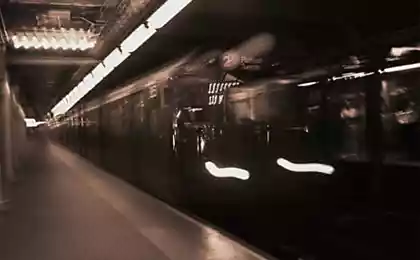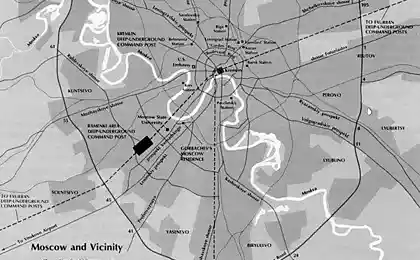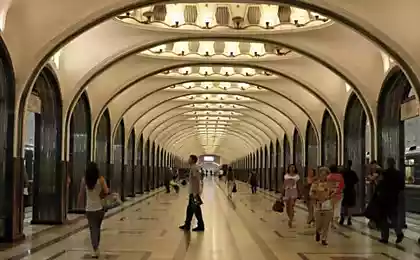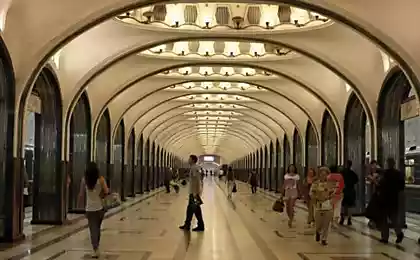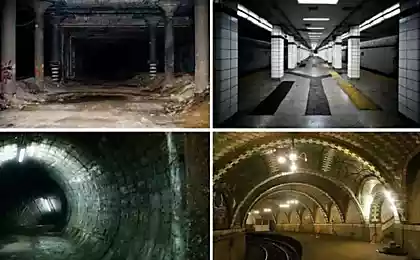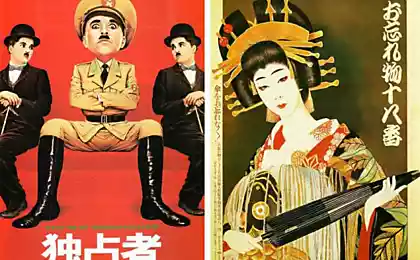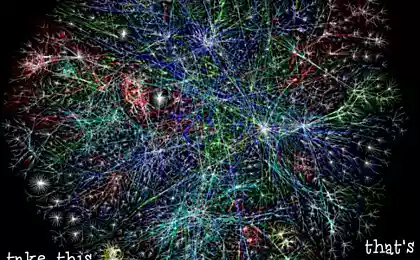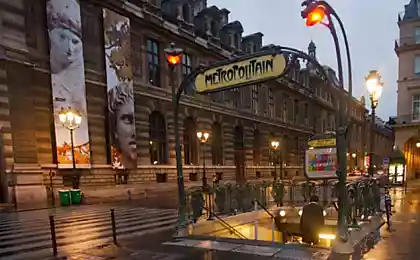1140
How does the Internet in the subway
I remember somewhere in early 2013 it was announced that at the end of the year a free wi-fi will appear on the Circle Line in Moscow, and the next - already at rest. We then laughed and forgotten. And here, suddenly, he appeared.
In order to understand how the Internet works in the subway, let us walk in the company that he is engaged.

To my surprise, all of the questions on the installation and operation of the network ultimately responsible CEO of MaksimaTelekom Boris Volpe. And to see the process of installing the equipment on the compositions with their own eyes, I also visited the depot «Northern».
With Boris we met at the station "Belorusskaya" -ring. Afternoon explore the equipment standing in the tunnels, of course, impossible. So we go to the nearest cafe to conduct "technical" talks. In my unspoken question Boris said that he often uses the subway, and in everyday life to his work in the north Zamoskvoretskaya line goes only on the subway.
"Metro - it's fast and convenient. I have, and for a long time, the car with the driver, but on it I will go to the "Dobryninskaya" very long and unpredictable. I appreciate your time and therefore I use the subway ».
Internet in subway cars was before, from one of the mobile operators. He even occasionally worked. The carriages had access point with a unique name. Coming out of the car and entering the other, it needed to look anew each time and re-establish a connection. At the same time there were problems with the channel tunnel train, which was used for radiating cables working on technology 2G / 3G. Accordingly, as someone rightly pointed out, Wi-Fi in the car was, but the Internet is not always.
Who uses a fundamentally new system. In fact it is the radio channel between the base stations in the tunnel and head coaches of the train. To the base station stretched optics - it is much cheaper and easier in use than naughty radiating cable. And in the car is "normal" access point, there was the Internet.
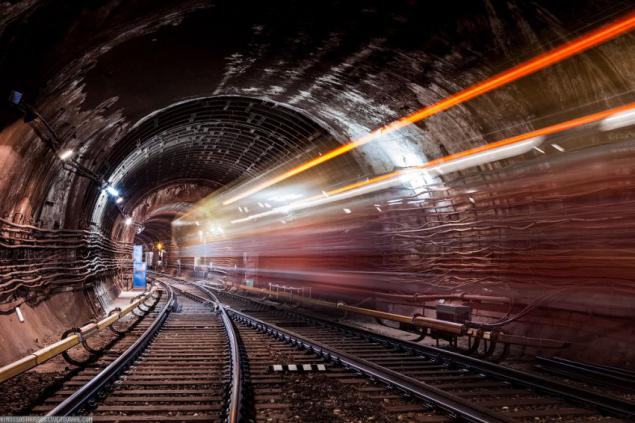
In the history of the world experience were only two cases of installing Wi-Fi in the subway, but only at the stations - did so in Toronto and London. As far as I know right now, high-speed internet access in the train for the first time in the world was carried out in the line of the Moscow metro Kakhovska.
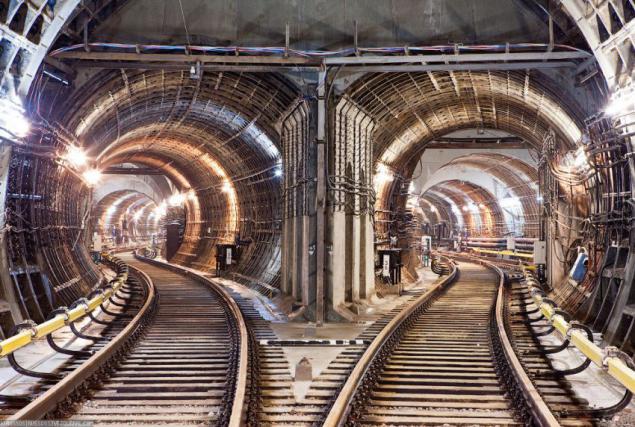
At the request of the customer (Metro) Wi-Fi only do the trains. At the moment, we decided not to turn the station into branches of fast food, sitting in that can be downloaded from the World Wide Web all the necessary information. Cover online network stations not be easy - it's not going train. Most likely, in the future, when Wi-Fi will on other lines of Moscow subway metro wireless network still have to organize metrovokzalah to avoid ending the session :)
Probably, at the initial stage will be made only to "memorize" the session. Ie We came out of the car - the connection was lost. Make a connection, the network caught - and the session continued. And only then will consider covering themselves stations.
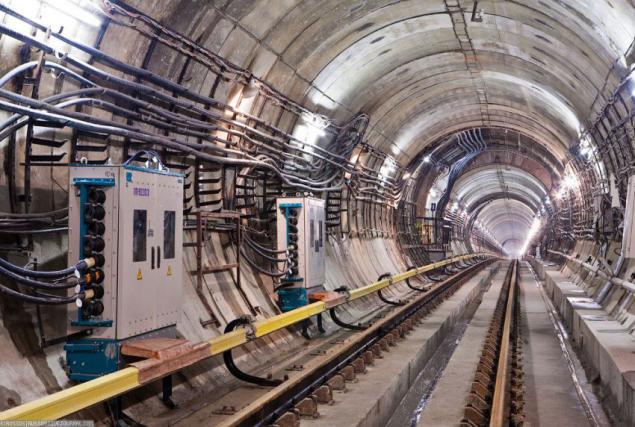
Also Kakhovska line (pilot project), internet in the underground there are also on the ring and Kaliniskoy lines. In the three depots ("Novogireevo", "North" and "Cherkizovo") are working on the equipment was. Already approved project for the entire underground network, and the company MaksimaTelekom ready to implement it.
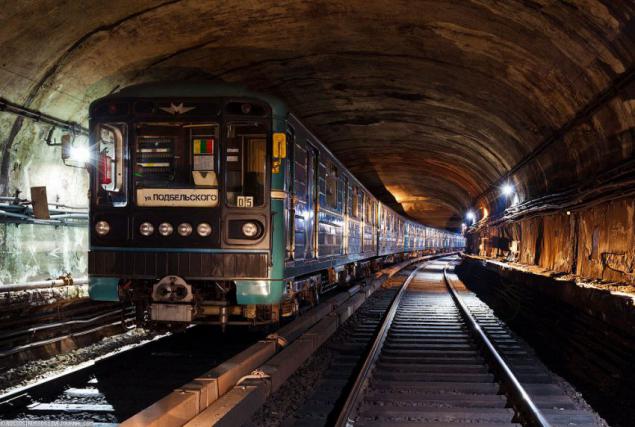
At the moment, the Internet is free and the subway will remain as such. Under the contract he should be free, although the traffic can be monetized. The project has not laid a penny of city money - only investors' funds. Restrictions on traffic yet, but already it is clear that some rock torrents. Most likely, it will be introduced some restrictions if it would interfere with the total capacity. Although the network was very flexible and easily scalable.

After login the user to the portal vmet.ro, which is the home page when connected to a Wi-Fi network in the subway. Made the most convenient and informative for users constantly updated with relevant information on several topics - news, movies and TV shows, radio, payment of utility bills, mobile communications, traffic police fines. Traffic yet, but you can turn it on. Maybe it will go down in the package of paid services.


Optical Cable provides 10 Gbps. The composition is constantly connected to the network speed from 70 up to 100 Mbps. It is enough that anyone can freely browse the internet news, use email and listen to music.
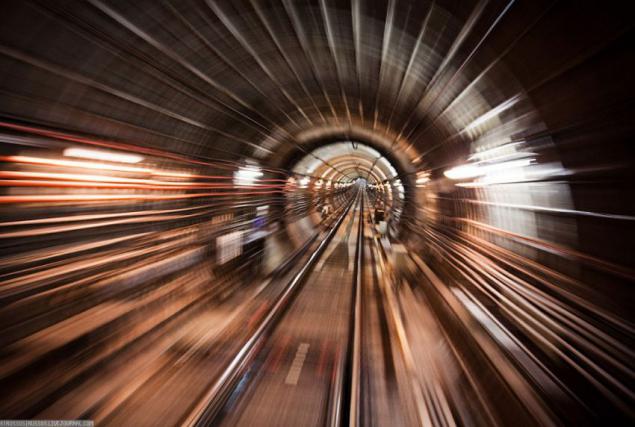
Now is the entry point to the "Novokuznetskaya", the highway stretches to the Circle Line. Planned construction of the second gate on the "Belarusian" -ring. The stations are server racks, where the fiber extends to the base stations in tunnels. They are located on average 450 meters in length and two meters in height from the rail head - the maximum permissible distance. The tunnels were laid two cables. Second - it is powered from the substation underground.
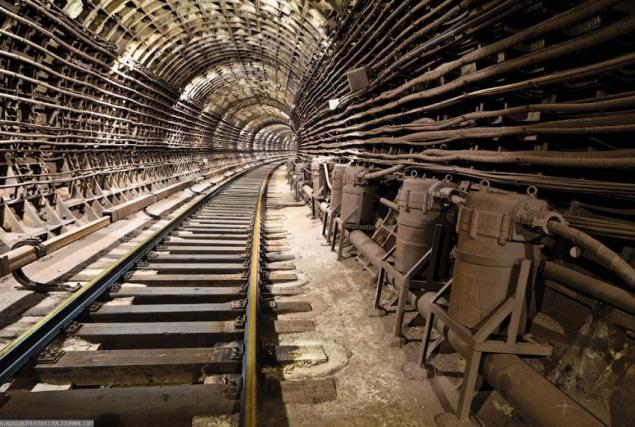
On the Circle Line all the equipment was installed in a matter of months. At night the window, and it is two hours (the rules of the Underground, the staff of other organizations have to leave the tunnels to the half of the fifth, and metropolitenovtsy themselves - to five o'clock in the morning), a team of drifters (who pulls the cables) was putting 2-3 kilometer fiber or 1 5-2 kilometer power cable. Later carried mount antennas and equipment.
Generally, Metro stringent requirements for equipment in the tunnels - passenger safety first and foremost. Thus, the equipment has been tested to vibration and windproof, elektrosovmestimost.
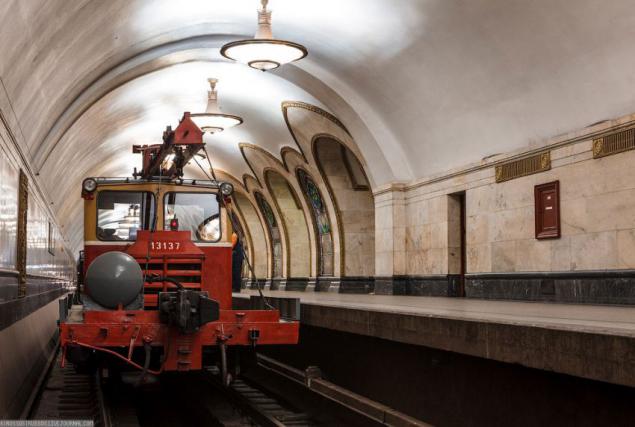
Developed Regulations for installing car equipment for all types of rolling stock.

With cars in general, everything is simple. The head stand fin antenna to receive the signal:
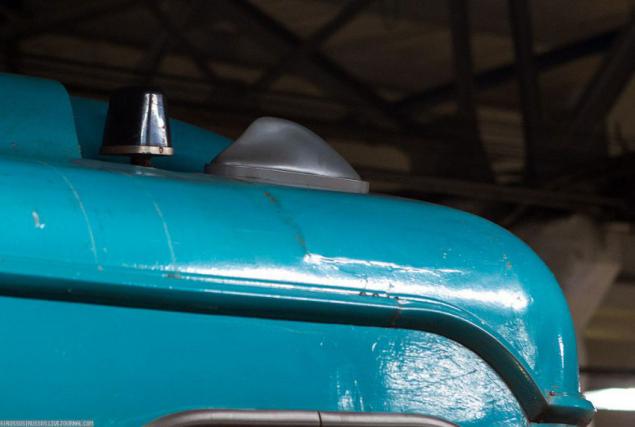
The "head" is already the equipment, there was a signal for the access points. In truth, the composition is stretched along two lines. Basic 1 Gbps, and backup 100 Mbps - this allows the user to transfer data access points Wi-Fi in the router head car. Each head coach, as I mentioned earlier, is connected to the fixed network and the Internet MaksimaTelekom over the air capacity from 70 to 100Mbps. Available bandwidth users is limited to this value.
Each car has an access point. The license - in the end, as in "Rusich" roughly in the middle, under the roof plate. If the composition unhook a "head", the latter still provide the Internet, because in fact the composition is divided into two parts and each is an independent network. Moreover, cars can disengage and rearrange between the compositions. No additional hardware settings after connecting sockets not trebuetsya.Kstati, Metropolitan even ordered a ban on Internet use machinists.

Different types of cars are very different from each other. For example, a license to work easier. The case of steel and thick - it is easy to drill, and a lot of space inside. And the "Rusich" walled enclosure, it is necessary to make a hole without selling the metal itself, leaving dents. Modern cars are so closely arranged that find a place in the equipment was difficult. By the way, is currently being negotiated with the manufacturer of rolling stock, and soon, perhaps, all cars will be equipped with wi-fi at the factory.
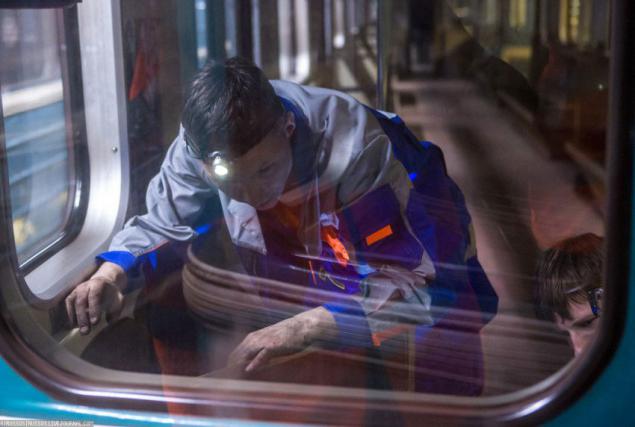
A team of 8 people equips the composition of the eight cars in the underground internet "turnkey" for 12 hours. You can reduce this time to 10 hours, but not make much sense.
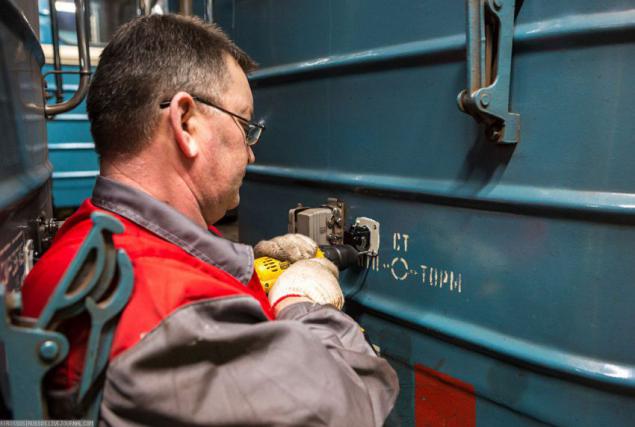
All boxes of equipment in the carriages and in tunnels, equipped capsules with powder. In the case of heating the capsule explodes and puts out the fire with a special mixture. To any outfit at Metro there are certain requirements. For example, the cables must be not only non-flammable, resistant to rodents, but do not emit harmful and dangerous substances.
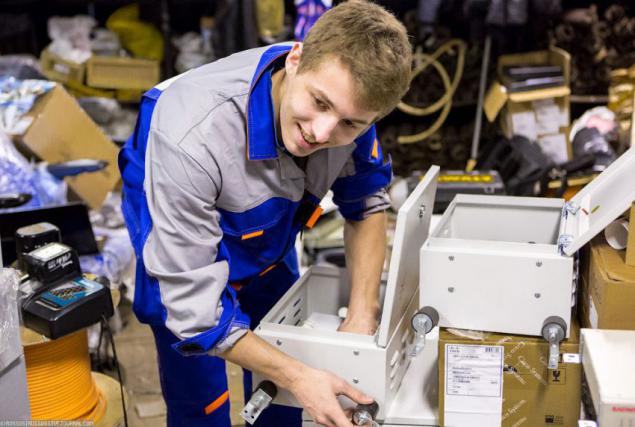
During the years of operation of each car gets individuality. All equipment has to be customized on the spot. The hollow beam, for example, can easily be brewed, and stretch the wire will then be nowhere. Is that under the floor. Similar tricks can be a lot, especially in the old rolling stock.
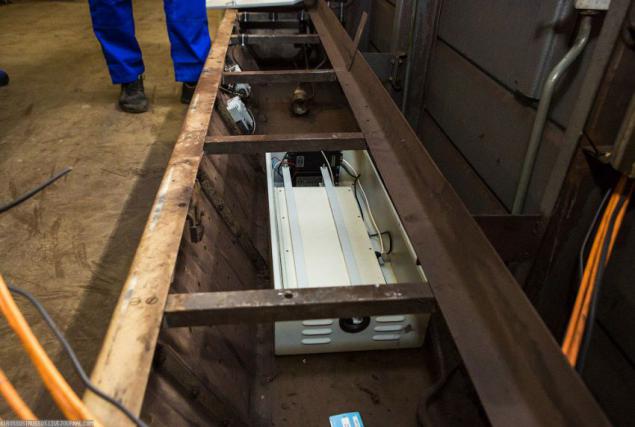
I asked Boris Volpe about the complexities of interaction with the Underground, they say, is a huge bureaucratic organization. I hear a surprising answer: "You will not believe, but because of all the great customers Moscow metro is probably the most loyal and comfortable. No delays. Everything is done quickly and on time. The huge help in the implementation of the project has a chief of communications. We work with him 24 hours a day. Such that in five all-time ended, no. We must - work in the evening, at night. The meeting at three o'clock in the morning we have a common thing. Or five, after a night window ».
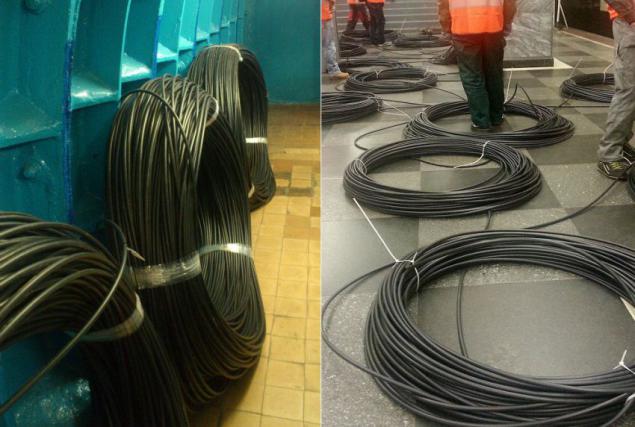
The most popular among passengers sites - social networks (Odnoklassniki and Vkontakte), as well as major information resources you'll ever need.
Along with them are very popular sites Metro and the Moscow Government. Most of the passengers connect with smartphones (85%) and tablets - to 10%.

Peak traffic (in total in both directions) reached 581 Mbit / s for an hour. Average traffic over the past 30 days - 182 Mbit / s. Since December 26 last year transferred 85 TB of data.
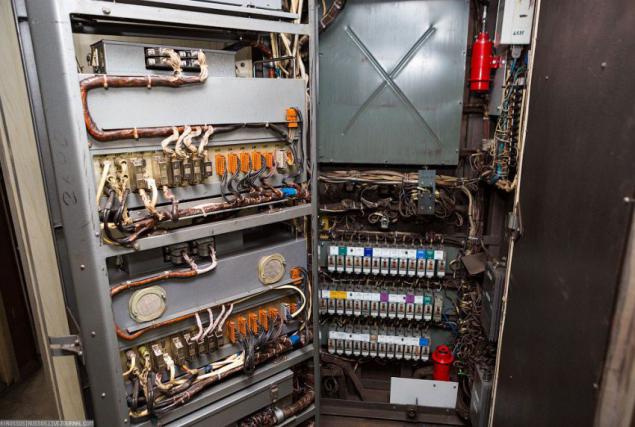
Metropolitan despite all its shortcomings become more comfortable and convenient for passengers!
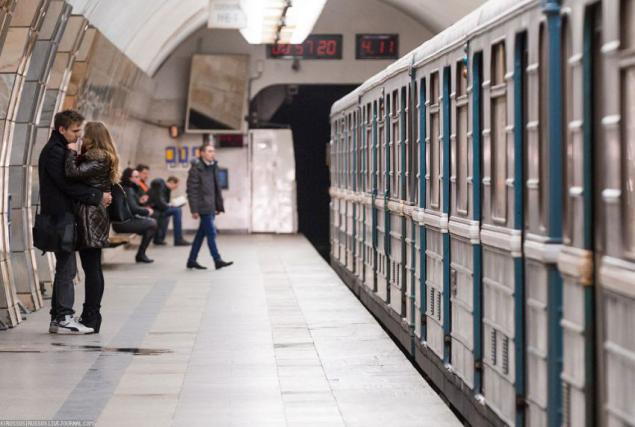
Source: russos.livejournal.com
In order to understand how the Internet works in the subway, let us walk in the company that he is engaged.

To my surprise, all of the questions on the installation and operation of the network ultimately responsible CEO of MaksimaTelekom Boris Volpe. And to see the process of installing the equipment on the compositions with their own eyes, I also visited the depot «Northern».
With Boris we met at the station "Belorusskaya" -ring. Afternoon explore the equipment standing in the tunnels, of course, impossible. So we go to the nearest cafe to conduct "technical" talks. In my unspoken question Boris said that he often uses the subway, and in everyday life to his work in the north Zamoskvoretskaya line goes only on the subway.
"Metro - it's fast and convenient. I have, and for a long time, the car with the driver, but on it I will go to the "Dobryninskaya" very long and unpredictable. I appreciate your time and therefore I use the subway ».
Internet in subway cars was before, from one of the mobile operators. He even occasionally worked. The carriages had access point with a unique name. Coming out of the car and entering the other, it needed to look anew each time and re-establish a connection. At the same time there were problems with the channel tunnel train, which was used for radiating cables working on technology 2G / 3G. Accordingly, as someone rightly pointed out, Wi-Fi in the car was, but the Internet is not always.
Who uses a fundamentally new system. In fact it is the radio channel between the base stations in the tunnel and head coaches of the train. To the base station stretched optics - it is much cheaper and easier in use than naughty radiating cable. And in the car is "normal" access point, there was the Internet.

In the history of the world experience were only two cases of installing Wi-Fi in the subway, but only at the stations - did so in Toronto and London. As far as I know right now, high-speed internet access in the train for the first time in the world was carried out in the line of the Moscow metro Kakhovska.

At the request of the customer (Metro) Wi-Fi only do the trains. At the moment, we decided not to turn the station into branches of fast food, sitting in that can be downloaded from the World Wide Web all the necessary information. Cover online network stations not be easy - it's not going train. Most likely, in the future, when Wi-Fi will on other lines of Moscow subway metro wireless network still have to organize metrovokzalah to avoid ending the session :)
Probably, at the initial stage will be made only to "memorize" the session. Ie We came out of the car - the connection was lost. Make a connection, the network caught - and the session continued. And only then will consider covering themselves stations.

Also Kakhovska line (pilot project), internet in the underground there are also on the ring and Kaliniskoy lines. In the three depots ("Novogireevo", "North" and "Cherkizovo") are working on the equipment was. Already approved project for the entire underground network, and the company MaksimaTelekom ready to implement it.

At the moment, the Internet is free and the subway will remain as such. Under the contract he should be free, although the traffic can be monetized. The project has not laid a penny of city money - only investors' funds. Restrictions on traffic yet, but already it is clear that some rock torrents. Most likely, it will be introduced some restrictions if it would interfere with the total capacity. Although the network was very flexible and easily scalable.

After login the user to the portal vmet.ro, which is the home page when connected to a Wi-Fi network in the subway. Made the most convenient and informative for users constantly updated with relevant information on several topics - news, movies and TV shows, radio, payment of utility bills, mobile communications, traffic police fines. Traffic yet, but you can turn it on. Maybe it will go down in the package of paid services.


Optical Cable provides 10 Gbps. The composition is constantly connected to the network speed from 70 up to 100 Mbps. It is enough that anyone can freely browse the internet news, use email and listen to music.

Now is the entry point to the "Novokuznetskaya", the highway stretches to the Circle Line. Planned construction of the second gate on the "Belarusian" -ring. The stations are server racks, where the fiber extends to the base stations in tunnels. They are located on average 450 meters in length and two meters in height from the rail head - the maximum permissible distance. The tunnels were laid two cables. Second - it is powered from the substation underground.

On the Circle Line all the equipment was installed in a matter of months. At night the window, and it is two hours (the rules of the Underground, the staff of other organizations have to leave the tunnels to the half of the fifth, and metropolitenovtsy themselves - to five o'clock in the morning), a team of drifters (who pulls the cables) was putting 2-3 kilometer fiber or 1 5-2 kilometer power cable. Later carried mount antennas and equipment.
Generally, Metro stringent requirements for equipment in the tunnels - passenger safety first and foremost. Thus, the equipment has been tested to vibration and windproof, elektrosovmestimost.

Developed Regulations for installing car equipment for all types of rolling stock.

With cars in general, everything is simple. The head stand fin antenna to receive the signal:

The "head" is already the equipment, there was a signal for the access points. In truth, the composition is stretched along two lines. Basic 1 Gbps, and backup 100 Mbps - this allows the user to transfer data access points Wi-Fi in the router head car. Each head coach, as I mentioned earlier, is connected to the fixed network and the Internet MaksimaTelekom over the air capacity from 70 to 100Mbps. Available bandwidth users is limited to this value.
Each car has an access point. The license - in the end, as in "Rusich" roughly in the middle, under the roof plate. If the composition unhook a "head", the latter still provide the Internet, because in fact the composition is divided into two parts and each is an independent network. Moreover, cars can disengage and rearrange between the compositions. No additional hardware settings after connecting sockets not trebuetsya.Kstati, Metropolitan even ordered a ban on Internet use machinists.

Different types of cars are very different from each other. For example, a license to work easier. The case of steel and thick - it is easy to drill, and a lot of space inside. And the "Rusich" walled enclosure, it is necessary to make a hole without selling the metal itself, leaving dents. Modern cars are so closely arranged that find a place in the equipment was difficult. By the way, is currently being negotiated with the manufacturer of rolling stock, and soon, perhaps, all cars will be equipped with wi-fi at the factory.

A team of 8 people equips the composition of the eight cars in the underground internet "turnkey" for 12 hours. You can reduce this time to 10 hours, but not make much sense.

All boxes of equipment in the carriages and in tunnels, equipped capsules with powder. In the case of heating the capsule explodes and puts out the fire with a special mixture. To any outfit at Metro there are certain requirements. For example, the cables must be not only non-flammable, resistant to rodents, but do not emit harmful and dangerous substances.

During the years of operation of each car gets individuality. All equipment has to be customized on the spot. The hollow beam, for example, can easily be brewed, and stretch the wire will then be nowhere. Is that under the floor. Similar tricks can be a lot, especially in the old rolling stock.

I asked Boris Volpe about the complexities of interaction with the Underground, they say, is a huge bureaucratic organization. I hear a surprising answer: "You will not believe, but because of all the great customers Moscow metro is probably the most loyal and comfortable. No delays. Everything is done quickly and on time. The huge help in the implementation of the project has a chief of communications. We work with him 24 hours a day. Such that in five all-time ended, no. We must - work in the evening, at night. The meeting at three o'clock in the morning we have a common thing. Or five, after a night window ».

The most popular among passengers sites - social networks (Odnoklassniki and Vkontakte), as well as major information resources you'll ever need.
Along with them are very popular sites Metro and the Moscow Government. Most of the passengers connect with smartphones (85%) and tablets - to 10%.

Peak traffic (in total in both directions) reached 581 Mbit / s for an hour. Average traffic over the past 30 days - 182 Mbit / s. Since December 26 last year transferred 85 TB of data.

Metropolitan despite all its shortcomings become more comfortable and convenient for passengers!

Source: russos.livejournal.com

